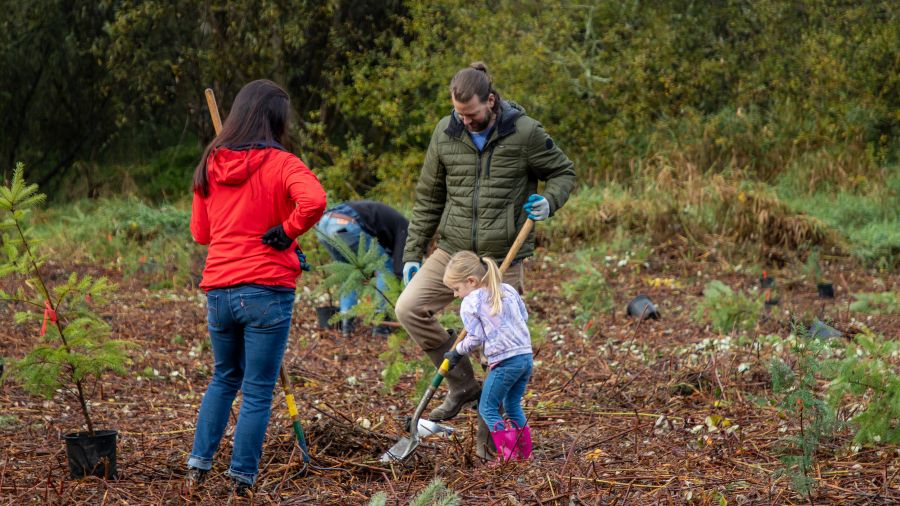Asian giant hornet trapping season kicks off in Washington
Jul 1, 2022, 4:48 PM

A Washington State Department of Agriculture worker displays an Asian giant hornet taken from a nest on October 24, 2020, in Blaine, Washington. (Photo by ELAINE THOMPSON/POOL/AFP via Getty Images)
(Photo by ELAINE THOMPSON/POOL/AFP via Getty Images)
With the start of July comes the kickoff of Asian giant hornet trapping season.
This is the time of year when worker hornets start emerging from their nests and can be trapped. The season generally lasts through December, at which time the hornets go into winter hibernation.
For the third summer in a row, entomologists from the Washington State Department of Agriculture will be heading up to Northwest Whatcom County, the only place where the hornets have been found in previous years, to start the trapping and tracking effort.
State makes discovery about Asian giant hornets eradicated in 2021
Karla Salp, acting communications director for the department, said this year, things are getting especially tech-y. After trapping an Asian giant hornet, scientists typically attach a tracker and then release the hornet, so the hornet can be followed and the location of its nest can be discovered. Now, scientists plan to use drones to follow hornets through areas that are hard to get through on foot. Some of the department’s entomologists even traveled to South Korea to receive training on how to track Asian giant hornets via drone.
“This drone would be used to track a hornet after it is released. The hope is that it would enable us to make it through those really kind of wild areas,” she said. “Where there are a lot of blackberries and underbrush … we’re at a disadvantage and can lose them quite quickly.”
Trapping season is not just for state scientists, however. The Department of Agriculture is calling on any residents who want to lend their efforts to make DIY traps with old juice cartons and rice wine. Directions are on the Department of Agriculture’s website.
Salp said that these citizen scientists are an important part of the effort — last year, all three of the nests that were eradicated began with regular people’s reports.
The hornets have only been found in the Blaine area of Whatcom County, but Salp said that it is helpful for anyone around the state to hang traps, just in case an Asian giant hornet stows away on a ship and lands in another location in the Puget Sound area. This is likely what happened in Marysville last year, when a resident found a dead hornet in his yard.
“While we don’t think the population that was initially detected in Washington has gotten out of Whatcom County, you never know about new introductions from other locations,” Salp said. “So it’s a really valuable service that people are providing when they do set up those traps.”
After the three nests last summer were eradicated near Blaine, there were no hornet sightings for three months, the rest of the season. Salp said this was promising, but it is far too soon to declare victory over the hornets.
“Our own standard is that we have to have at least three years with no detections — we don’t have one year yet with no detections,” she said. “So there’s still a lot to learn, and we can’t really make any projections about whether we think we got them or not.”
Still, she said it is a good sign that the hornets have only been spotted in the Northwest corner of Whatcom County thus far, and not in other parts of the county or state.
“It does seem that we’ve at least prevented the spread in Whatcom County so far, so that’s a success,” she said. “But our goal is to eradicate them, so there’s still more work to be done.”








